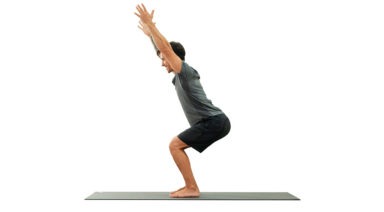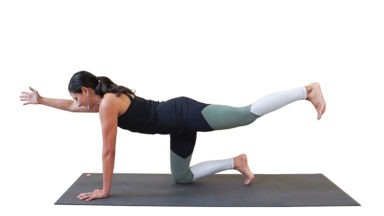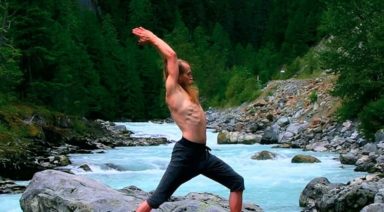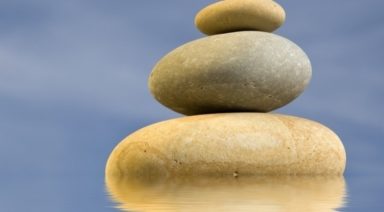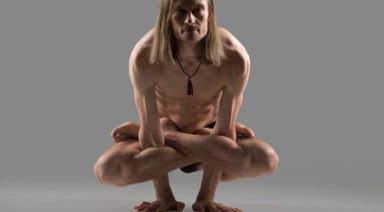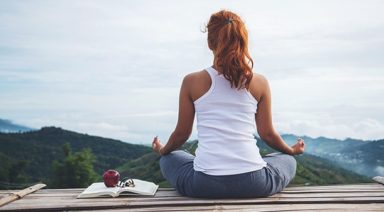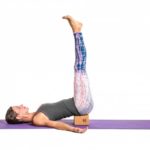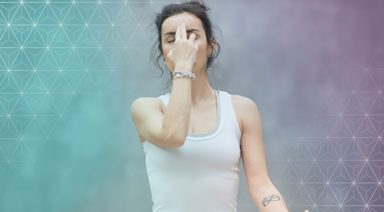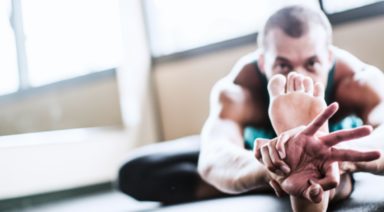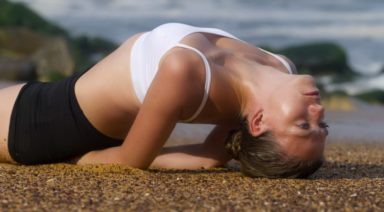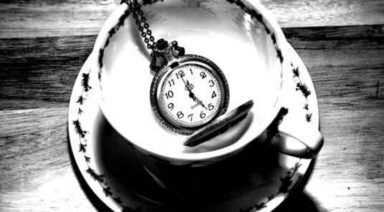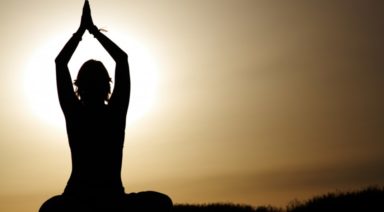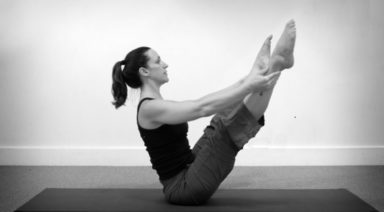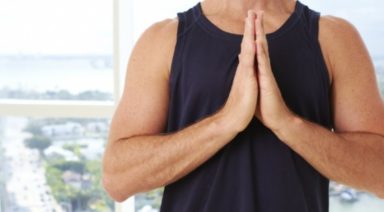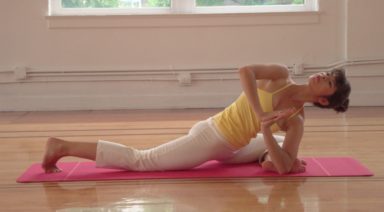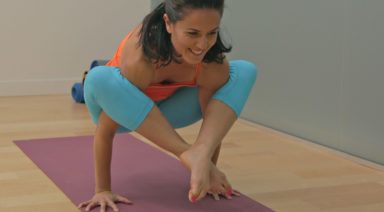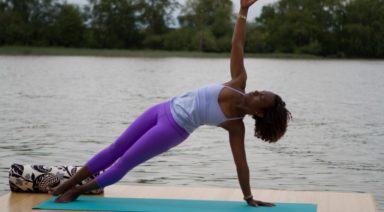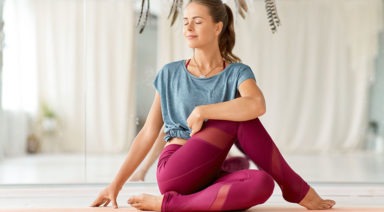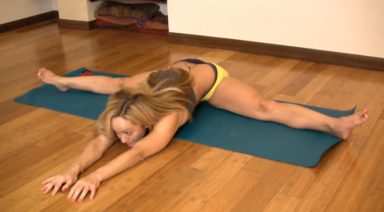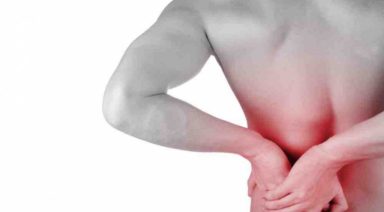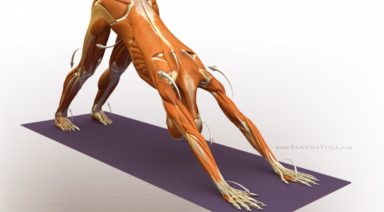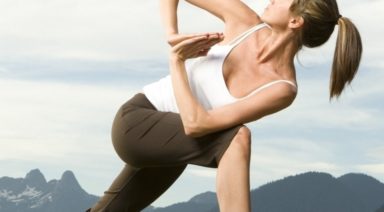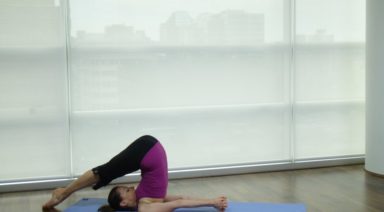Eka Pada Rajakapotasana: Pigeon Pose

Eka pada rajakapotasana (Eh-kah PAH-dah rah-JAH-cop-oh-TAHS-ah-nah) is quite a mouth-full! Also known as the pigeon or one-legged pigeon pose. This is a hip stretch and backbend to stretch the outer hip of the front leg, the hip flexors of the back leg, and can either be a forward fold or a backend, depending on the variation you choose.
SANSKRIT:
- Eka = one
- Pada = foot
- Raja = king
- Kapota = pigeon, or dove
- Asana = pose
PHYSICAL BENEFITS
- Stretches hip flexor muscles (psoas, rectus femoris) and groin muscles.
- Stretches hip rotator muscles (gluteus medius and minimus).
- Thought to increase circulation to urinary, digestive, and reproductive systems.
PREPARATORY POSES
- Bound-angle pose | Baddha konasana
- Head to knee pose | Janu sirsasana
- Crescent lunge | Anjanayasana
SEQUENTIAL POSES
- Reclining hero pose | Supta virasana
- Deer pose
- Cow face pose | Gomukhasana
COUNTER POSES
- Downward-facing dog | Adho mukha svanasana
- Constructive rest pose
- Happy baby pose | Ananda balasana
Adjustments/Modifications:
- If at any point you feel low back pain in the pose, back off, draw your low belly in and lengthen through your spine to avoid compression. A folded blanket, foam block, or bolster under the front thigh will add support and may relieve discomfort.
- One variation of the pose asks for the front shin to be parallel to the top of your mat and your foot flexed.
- Another variation of the poses asks for the front heel to be close to your hips with the top of your foot on the ground.
- As you prepare to try on other variations of pigeon, use a strap around the back foot and slowly draw your foot in toward your torso as you lift your chest up.
Step-By-Step:
- From tabletop, bring your right knee forward to the floor just behind your right hand.
- Place your right foot toward the left side of your mat, shin on the mat, with your knee at an angle that creates a stretch in the hip without pain in the knee. If your shin is parallel to the top of the mat, flex your foot back to stabilize your knee.
- Walk your left knee behind you until your leg is fully extended. Draw your inner thighs energetically toward each other, which will slightly lift your pelvis.
- Find the middle point where equal weight is between your left and right sides, and your pelvis is squared to the front of your mat.
- If the right hip is off the ground, use a folded blanket, foam block, or bolster under your right hip for support, keeping the hips square and level.
- Uncurl your left toes, looking back to see that your ankle is in line with your shin, and your leg is running in a straight line behind you.
- On an inhale, send your tailbone down toward the earth and the crown of your head up towards the sky.
- Option to exhale and slowly walk your hands forward in front of you, placing elbows on the floor or arms extended in front of you with torso on the floor.
- Breathe slowly for at least 5 deep breaths.
- Slowly walk your hands back up towards your body, placing your hands slightly wider than shoulder-width. Send the head of the arm bones back, allowing your upper chest to lift slightly so that the collarbones are broad.
- Inhale to send your tailbone down and your crown up, walking your hands closer and closer to the body on an exhale so that the torso is moving towards an upright posture. Breathe here for 5 breaths or continue with the variation pose below.
- Variation A – If you are able to painlessly and evenly stay in this posture while removing your right hand from the earth, you may reach your right arm behind you with the palm up. Draw your lower belly in to stabilize your spine, inner thighs moving towards each other. Bend your right knee and grasp the flexed foot with your hand. You may stay here and breathe or progress to the next variation.
- Variation B – Point your foot and slowly shift your hand to the toes of the foot by outwardly rotating your arm deeper, slowly lifting the elbow forward, upwards, and eventually backward so that the palm is facing down. Press your left support hand into the floor to lengthen your waistline, keeping even weight in the left and right sides of the body. Breathe here or progress to the next variation.
- Variation C – If you are able to maintain your balance and stability draw the lower belly in, move your inner thighs towards each other, lift your left arm up and back, grasping your foot with both hands. Send the head of the arm bone back into the socket, keep the action of your lower belly and legs, and breathe.
- Slowly, release your foot, place both palms on the floor and step back to adho mukha svanasana (downward-facing dog).
- Return to your hands and knees and repeat on the other side.
###Legal Disclaimer Before participating in any exercise program or using any fitness products or services that may be described and/or made accessible in or through the Gaia Website and/or the Services, you should consult with a physician or other healthcare provider. Read more about Gaia’s Terms Of Use.
Utkatasana: Chair Pose
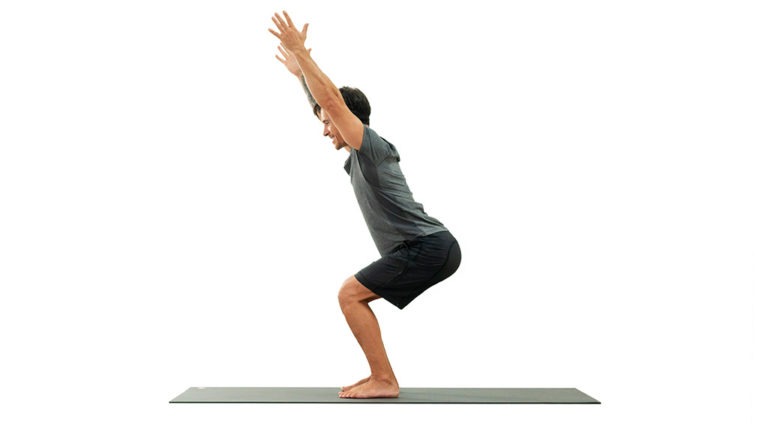
ADJUSTMENTS | BENEFITS | SEQUENCING | SANSKRIT | STEPS
A challenging pose with hidden benefits, utkatasana (OOT-kah-TAHS-anna) works your body inside and out. Aside from strengthening your legs, this powerful pose also improves the health of your diaphragm and stimulates your heart. Practicing regularly will not only increase your physical endurance, it also encourages your chest and arms to open, creating more space in your body energetically.
Philosophy + Origin
While sitting in a chair is a common act for most of us today, chairs were once, and in some locations still are, considered a luxury. A throne in particular is a seat of power, one assumed by leaders around the world. The pose utkatasana, translated to mean powerful pose, invites individuals to sit on their throne, their seat of power. Embracing the challenge of the pose, and recognizing the strength that is generated when assumed thoughtfully and in proper alignment (physically and spiritually), you can begin to refine all aspects of your life, allowing yourself to step into roles of leadership and responsibility with clarity and confidence.


